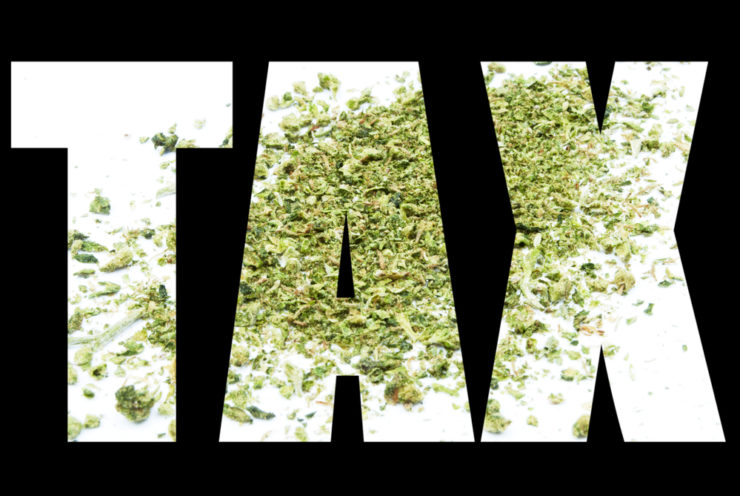California, CDTFA and Proposed Cannabis Tax Regulations

On July 20, 2018, the CDTFA released its discussion paper on proposed rulemaking regarding the administration of the cannabis cultivation and excise taxes. This blog post highlights the issues addressed in the proposed regulation.
By way of background, on August of 2017 the CDTFA promulgated two emergency regulations. The first, Regulation 3700, Cannabis Excise and Cultivation Taxes, was promulgated to ensure that essential guidance was available when California’s regulated cannabis market became operational on January 1, 2018. The second, Regulation 3701, Collection and Remittance of the Cannabis Excise Tax, was promulgated to clarify the imposition, collection, and reporting of the Cannabis Excise Tax. We previously discussed these regulations here, and we a discussed the Cultivation and Excise Tax here and here.
The CDTFA will not take action on Regulation 3701. However, the CDTFA has proposed many revisions to Regulation 3700. We summarize them below, and provide some commentary throughout.
- Expands the definition of cannabis flower to include trimmed or untrimmed flower but excludes leaves and stems removed before sale. The consequence of this proposed change is to assure that even trimmed flower will be taxed at the highest tax rate of $9.25 per dry weight ounce.
- Clarifies that “fresh cannabis plant” must be identified as fresh cannabis plant and recorded in the upcoming track-and-trace system. Until the track-and-trace system come online, a paper invoice or manifest must indicate that “fresh cannabis plant” is being transferred. This documentation is important. Fresh cannabis plant is taxed at the lowest rate of $1.29 per ounce; the proposed change clarifies what information is required to support paying tax at the lowest cultivation tax rate.
- Prohibits separately stating the cannabis excise tax on the receipt provided to a retail cannabis customer. Instead, the regulations require the invoice to state “The cannabis excise taxes are included in the total amount of this invoice”. Retailers purchasing from third-party distributors must compute the excise tax based on their wholesale cost plus 60% mark-up as determined by the CDTFA. Separately stating the excise tax allows a consumer to determine the wholesale cost of a cannabis retailer. The proposed prohibition does not provide retailers the flexibility to disclose the computation of the tax to its customers.
- Clarifies that transactions between two distributors must document that no cannabis excise tax was collected or remitted on the transaction. That is, the distributor that sells cannabis to the cannabis retailer is the one responsible for collecting and remitting the cannabis excise tax to the CDTFA.
- Clarifies that invoices documenting the cultivation tax must disclose the weight and category of the cannabis that entered the commercial market. This change is to assure that the receipt a manufacture provides to a cultivator includes the weight and category (i.e., cannabis flower, cannabis leaves, or fresh cannabis plant) of cannabis transferred. The weight and category must match the information in the track-and-trace system.
- Requires a manufacture to provide a distributor (or next party in the transaction) an invoice or manifest that documents the weight and category of cannabis used to produce the cannabis product. This change is to assure that a distributor has the necessary information to properly collect and remit the cultivation tax to CDTFA.
- Clarifies that a cannabis accessory is not subject to the 15% excise tax. When a cannabis product is sold with a cannabis accessory, the cannabis retailer must segregate the wholesale cost of cannabis from the wholesale cost of the cannabis accessory on the customer receipt. If a cannabis retailer is unable to segregate the wholesale cost, the cannabis excise tax will include the wholesale cost of the cannabis accessory in the computation. The proposed regulation places the burden on the retailer to segregate its wholesale costs to avoid including the cost of a cannabis accessory from the excise tax paid by a cannabis consumer.
- Clarifies that a 50% penalty is imposed for unpaid taxes. The 50% penalty is added to the cultivation or excise tax not paid by the due date. For example, the tax payment for the third quarter of 2018 is due October 31, 2018. A payment on November 1, 2018 would subject the distributor to the 50% penalty. Although the penalty can be waived for reasonable cause, a best practice is to always file and pay your cultivation and excise taxes on time.
- Introduces proposed Regulation 3702 which requires the following information to be entered into the California track- and-trace system including: name of originating seller of cannabis; name of retailer purchasing cannabis; unique identifying number of cannabis supplied to the retailer; and the retailers wholesale cost. The CDTFA intends to use the track-and-trace system to collect real data to assist in their determination of the appropriate mark-up used in determining the average market price the computation of the excise tax.
The regulations discussed above are only proposed and may change as CDTFA considers comments and another stakeholder input. Nonetheless, many of the recommendations contained in the proposed regulations are already on the CDTFA website. For example, the CDTFA website provides that “the flower category includes all dried flowers of the cannabis plant, whether trimmed or untrimmed”. So some of these provisions seem very likely to stick.
California cannabis businesses should continue to monitor these regulations as the CDTFA considers stakeholder comments and likely revises some portion of the proposed regulation. As the regulations develop, business owners should also revisit their tax strategies and operational protocols for tax efficiency.
For more on California’s cannabis tax regime, check out the following:
- California Sales Tax: Good News for the Cannabis Manufacturer
- California Cannabis Taxes and IRC 280E
- California Sales Tax: Good News for Cultivators!
- California’s LATEST Cannabis Tax Regulation: No Free Lunch
- California’s NEW Cannabis Tax Regulations: The Rules of the Road
>View original article
Author: Jim Hunt

